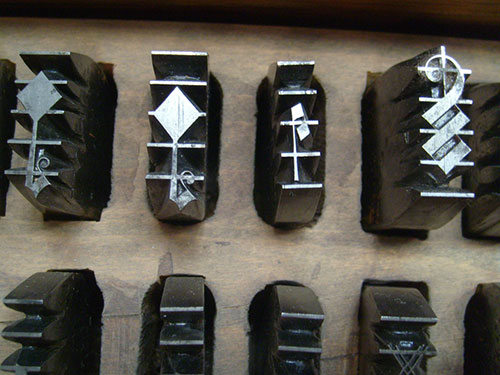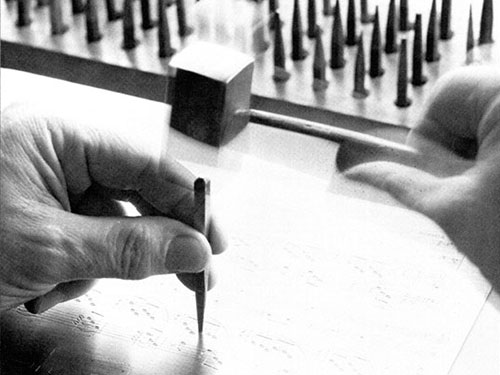MOVEABLE TYPE

The process of printing music with moveable type was similar to printing text: individual blocks of type were lined up in a row, locked together, placed in a printing press, inked and pressed onto paper. Music notation is much more complicated than text, however, with staff lines, rests, dots, beams, double-stops, lyrics, and other things, so setting up a page of music type involved assembling lots of little blocks like a puzzle. The resulting print was often difficult to read, with little gaps between the bits of type and other artifacts of the printing process. A clear explanation of printing music with moveable type can be found here. And here is a video that shows the process and its evolution.
An additional problem with music set in moveable type was that the assemblages of type used to print one piece of music had to be taken apart when it was time to set up the next one. If you wanted more copies later, you had to start over from scratch.
ENGRAVING

The other music printing technology— engraving— produced far superior results: each line, note, letter and symbol was painstakingly inscribed in a copper plate by hand. The plate was then inked and impressed on paper, and could be stored for later in case more copies were needed. The results were beautiful, but materials were costly and the process was slow. A further explanation of the engraving process is here, and a fascinating video produced by Henle Verlag, which published music using an updated version of this process until 2000, is here.
